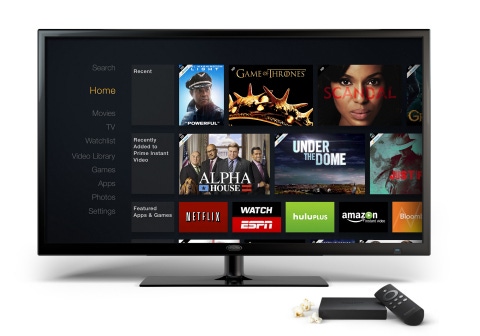DirecTV announced today that users of several models of its set-top boxes will be able to select programs, start and stop play, as well as control recording functions with voice, using Amazon’s AI personal assistant Alexa.
July 13, 2018

DirecTV announced today that users of several models of its set-top boxes will be able to select programs, start and stop play, as well as control recording functions with voice, using Amazon’s AI personal assistant Alexa.
The announcement on its official Twitter account, supported by a glossy picture, may look a giant leap for DirecTV, but is only a small step for the AI industry, in a perverse application of Neil Armstrong’s famous line. This is not only because DirecTV is late. Amazon updated its Video Skill API in March this year, to support apps to add recording, launcher, and state reporting functions. Four poster boys were listed as leading vendors to endorse the updates, DISH, Verizon, TiVo, and DirecTV. They largely came to the party in that chronological order.
To make voice bots work properly is tricky, and no one has done a fantastic job. In the set-top box use case, if there is one function that users have to go back to the physical remote control to perform, it will defeat the whole purpose of voice control user interface. In an earlier iteration of Alexa powered DISH menu, users could not open the top level “Guide”, nor did the menu recognise Netflix as a channel.
Even if the functions are enriched, there is also the thorny issues of accuracy, ambient noise, and accents, which can put users off. Different research has shown that large number of users would give up voice bots like Siri, Cortana, Google Home, etc. after registering high enthusiasm at the beginning.
Probably most critically there is the concern for privacy. Alexa is among the better performers among competing voice bots, largely thanks Echo, which has dominated the smart speaker market. However, Alexa found itself famously, or infamously, in the centre of an Echo “eavesdropping” controversy in May this year, missing the background conversation as voice command, according to Amazon’s version of the story.
So, there is still a long way to go before we can all embrace voice control both hands free and worry free. Before that, all progress will just be small steps.
About the Author(s)
You May Also Like








.png?width=300&auto=webp&quality=80&disable=upscale)


_1.jpg?width=300&auto=webp&quality=80&disable=upscale)


.png?width=800&auto=webp&quality=80&disable=upscale)